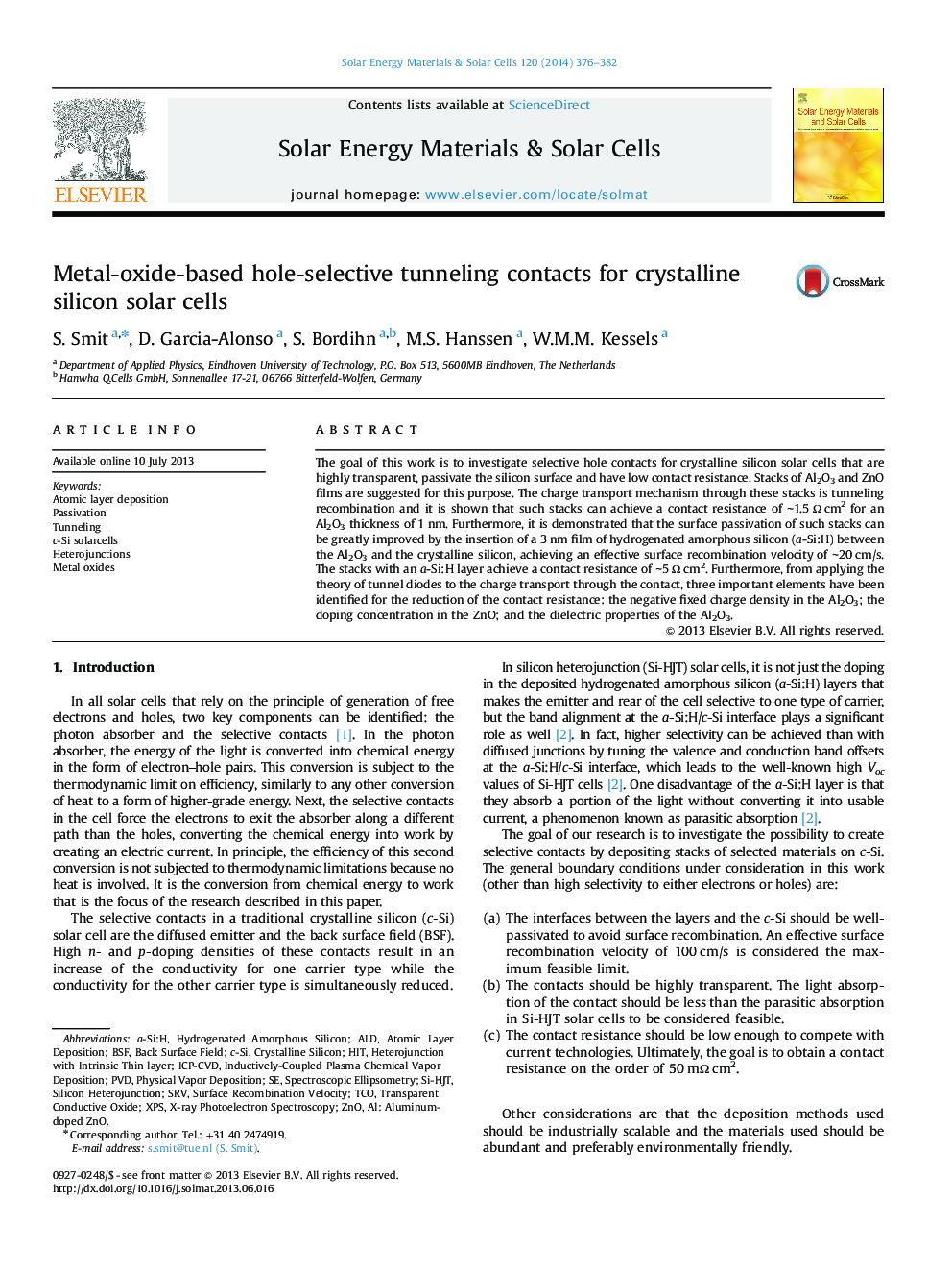| Article ID | Journal | Published Year | Pages | File Type |
|---|---|---|---|---|
| 10248758 | Solar Energy Materials and Solar Cells | 2014 | 7 Pages |
Abstract
The goal of this work is to investigate selective hole contacts for crystalline silicon solar cells that are highly transparent, passivate the silicon surface and have low contact resistance. Stacks of Al2O3 and ZnO films are suggested for this purpose. The charge transport mechanism through these stacks is tunneling recombination and it is shown that such stacks can achieve a contact resistance of â¼1.5 Ω cm2 for an Al2O3 thickness of 1 nm. Furthermore, it is demonstrated that the surface passivation of such stacks can be greatly improved by the insertion of a 3 nm film of hydrogenated amorphous silicon (a-Si:H) between the Al2O3 and the crystalline silicon, achieving an effective surface recombination velocity of â¼20 cm/s. The stacks with an a-Si:H layer achieve a contact resistance of â¼5 Ω cm2. Furthermore, from applying the theory of tunnel diodes to the charge transport through the contact, three important elements have been identified for the reduction of the contact resistance: the negative fixed charge density in the Al2O3; the doping concentration in the ZnO; and the dielectric properties of the Al2O3.
Keywords
BSFICP-CVDSRVPVDTCOALDHITTransparent conductive oxideZnOMetal oxidesSpectroscopic ellipsometryTunnelingc-SiPhysical Vapor DepositionAtomic layer depositionPassivationBack surface fieldSurface recombination velocityhydrogenated amorphous siliconCrystalline siliconX-ray photoelectron spectroscopyXPSSilicon heterojunctionheterojunctionsa-Si:H
Related Topics
Physical Sciences and Engineering
Chemical Engineering
Catalysis
Authors
S. Smit, D. Garcia-Alonso, S. Bordihn, M.S. Hanssen, W.M.M. Kessels,
